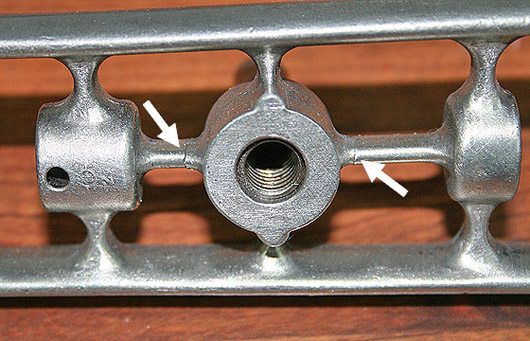No. 2A - Later ZAMAK
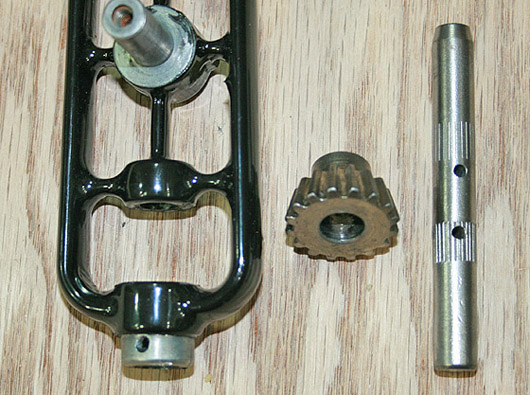
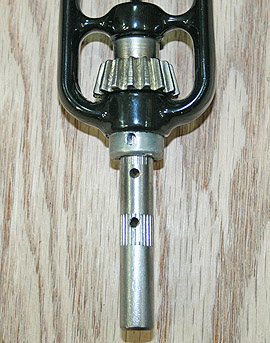
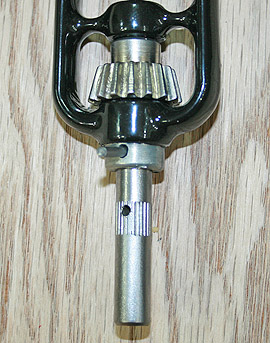
Obviously, this change was driven by the need to simplify
production process and by that reduction of the production cost.
In summary, the Hand Drill No. 2A Transitional shares some
characteristics of No. 2 - 1938 release and employs new design
element, later used in No. 2A - 1957 (ZAMAK) release.
The following
table illustrates construction element of 1938 design, migration
of some of these elements and new elements in No. 2A
Transitional. The third table shows migration of majority of these elements and new
elements in No. 2A - 1957 (ZAMAK) release.
|
No. 2 - 1938 |
No.
2A Transitional |
No. 2 - 1957 (ZAMAK) |
|
Iron Frame >
Spindle Size
Ball Bearing
Polished Spindle Hous. >
2 pinions >
Main Gear >
Chuck Design >
Main Handle >
Side Handle >
Crank Handle
Design >
Crank Handle Marking |
Iron Frame
NEW - Spindle Size
>
NEW - Ball Bearing
>
Polished Spindle Hous.
2 pinions >
Main Gear >
Chuck Design >
Main Handle >
Side Handle >
Crank Handle
Design >
NEW-Crank Handle
Marking> |
NEW
- "Zamak" Frame
Spindle Size
Ball Bearing
NEW - Painted Spindle
Hous.
2 pinions
Main Gear
Chuck Design
Main Handle
Side Handle
Crank Handle
Design
Crank Handle Marking |
The drill No. 2A Transitional is not seen on the second-hand
market very often. This suggest that the transitional
period was rather short.
The number of these drills available today is disproportionally
lower to the number of No. 2A-Zamak. Over last 3 years I
restored many dozens of No. 2A-Zamak drills. Over the same
time I have seen and purchased a dozen or so No. 2A
Transitional models.
Inevitable question stands on how frame made in Zamak compares
with iron. Here are my observations.
Drills made in Zamak are prone to give in under substantial
stress. Below are photographs of the frame brakeage.
I have seen this problem too often.
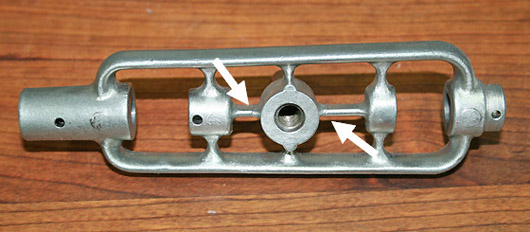
Here is a typical No.2A-Zamak frame after clean up.
Marked with arrows are two areas of concern.
